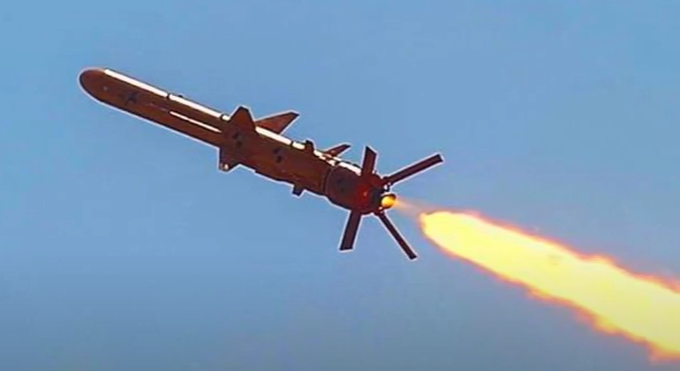
During the night between 14 and 15 March, Ukraine is said to have used the new LONG-NEPTUNE cruise missile for the first time against the Russian refinery at Tuapse (Krasnodar Krai), located on the Black Sea coast, about 600 km from Ukrainian territory.
The attack is part of the Ukrainian bombing campaign against Russian oil infrastructure. On 15 March 2025, Ukrainian President Volodymyr Zelensky stated that a new version of the R-360 NEPTUNE anti-ship missile had been successfully used, now modified to precisely hit targets up to 1,000 km away and called, in fact, LONG-NEPTUNE.
During the cruise phase, the missile uses an inertial guidance system integrated with satellite positioning, while in the approach phase it uses an infrared homing system. It is not yet clear whether this is IR (InfraRed) or IIR (Imaging InfraRed).
The R-360 NEPTUNE, based on the Soviet Kh-35, entered service in 2021, and was created as a mobile land-based anti-ship missile (within the system called NEPTUNE 360ST). The R-360 has a range of 280 km, weighs about 870 kg, is equipped with a 150kg warhead and is powered by an MS400 turbofan engine. However, the recent adaptation extends the role of the missile far beyond its initial purpose. The modification would in fact allow it to hit land targets at great distance.
The transition of the NEPTUNE missile from anti-ship missile to a versatile multi-target attack system began in April 2023, when Ukrainian Defence officials publicly revealed that plans were underway to modify the missile's guidance system and warhead. These modifications were designed to improve NEPTUNE's ability to hit both stationary and moving ground targets, according to the new needs of the Ukrainian Armed Forces.
Although the details are unclear, it is plausible that the missile's guidance system was adapted to hit ground targets, including military infrastructure, air defence systems and logistical hubs. Ukrainian strikes with NEPTUNE missiles against land targets confirm this hypothesis:
- on 23 August 2023, a modified R-360 missile was used to destroy an S-400 missile system radar deployed at Cape Tarkhankut in Crimea;
- on 14 September 2023, Ukrainian forces claimed to have destroyed several S-400 launchers near Yevpatoriya using drones and NEPTUNE missiles;
- on 31 May 2024, Ukraine launched several R-360 missiles against an oil depot located in Kavkaz, Krasnodar Krai;
- on 21 June 2024, a NEPTUNE hit a GERAN drone depot in Krasnodar;
- on 31 July 2024 the Khalyno air base in Kursk, located 100 km from the Ukrainian border, was hit;
- on 21 August 2024, the Ukrainian Army hit an S-300 battery in the Rostov Oblast, probably using a NEPTUNE.
The recent introduction of the LONG-NEPTUNE with a range of 1,000 km allows the Kiev forces to hit high-value targets deep in Russian territory, potentially creating quite a few problems for the Moscow forces. The effective conversion of the R-360 NEPTUNE from an anti-ship missile to a long-range cruise missile is also due to the ability of Ukrainian engineers to apply their existing knowledge of Soviet-designed missiles.
Ukraine inherited about 30% of the Soviet defence industry, both in terms of production capacity (plants) and research and development facilities. Among the most important, in the field of rocketry, are Luch design in Kiev and PA Pivdenmash in Dnipro; in the field of engines, on the other hand, are Zorya-Mashproekt, located in Mykolaiv, and Motor Sich in Zaporizhzhia; in the aeronautics field, the famous Antonov, based in Kiev (which, however, has suspended production due to the Russian invasion); while, in the armoured vehicle sector, the Malyshev plant in Kharkiv. Furthermore, despite the precarious conditions imposed by the war and limited resources, Ukrainian industry has managed to quickly adapt existing technologies to meet the needs of the conflict.
The transition to the use of internally developed systems, also observable in the drone sector, highlights the growing importance of self-sufficiency in Ukraine's defence. While Ukraine remains heavily dependent on foreign military aid, the ability to modify and upgrade its weapon systems independently represents a significant step towards strengthening national capabilities and, at least in part, reducing dependence on external support. (in the photo an R-360 NEPTUNE missile)








.png)
